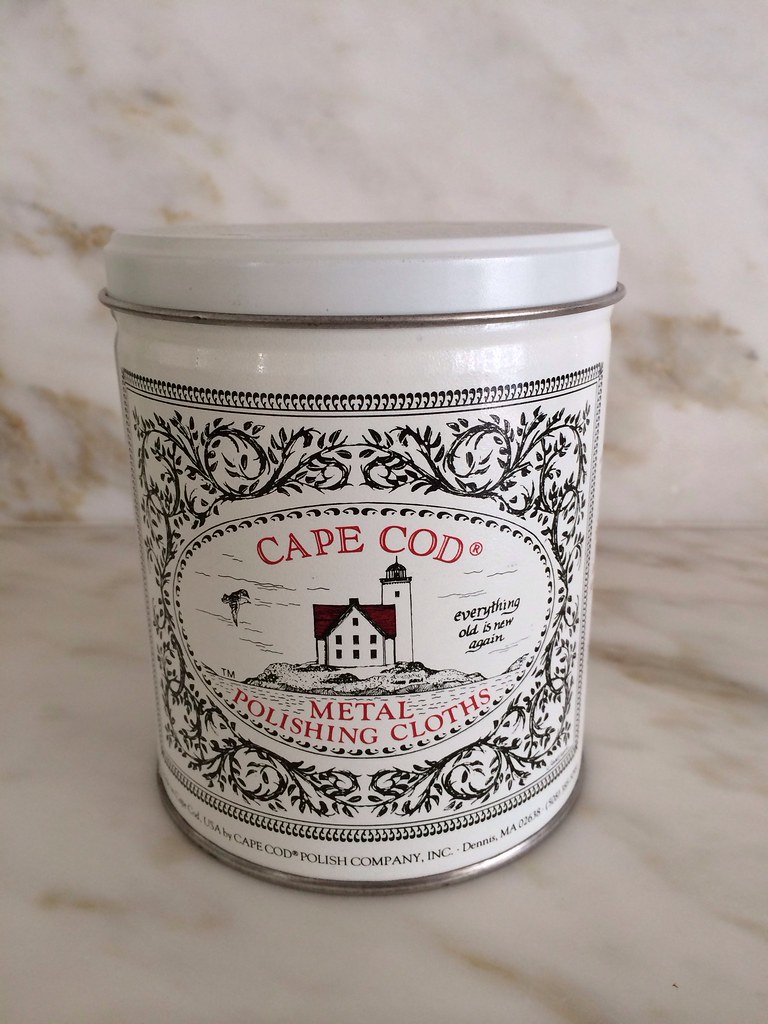Four spectacular homes will be on the Cathedral Tour of Homes in January, representing some of the best examples of Atlanta architecture from the 1930s – 1960s. It struck me as I was writing the profiles for the homes (my contribution to this amazing fundraiser that benefits Hero for Children in 2011) that these houses represent four different decades of architecture in Atlanta – one house was built in 1930, another house was built in 1941, another in the 1950s, and one was built in 1965. All of these houses were built to last for generations, and are an important part of the enduring legacy of Atlanta architecture. Three of these houses have never been on a house tour before, making this truly a once in a lifetime opportunity to see the homes beyond a glimpse from the road. In fact, one of the houses sits on 9 acres and can’t even be seen from the road – it was a stunning discovery to see it when I pulled beyond the front gate and caught a glimpse of it! I have passed by the home's driveway literally dozens of times, and never even knew it was there.
Here is a sneak peek of the four homes that will be on the tour on January 30-31, 2011.
I consider this 1930s Buckhead classic to be one of the most beautiful houses in Atlanta. A total renovation in 2005 by the architectural firm of Spitzmiller & Norris brought the inside of the home into the 21st century and transformed the interior spaces to create a wonderful flow and connection to the outdoors that is perfect for modern family life and entertaining.
The owners of this charming 1940s Buckhead house transferred from London several years ago, and fell in love with this home for its wonderful street presence, great bones, and gorgeous lot. An extensive renovation was immediately begun, and in 2010 a new pool house was designed and constructed. Linda MacArthur was the architect who helmed both projects, with Jane Hollman of Studio Entourage on the kitchen design, Margaret and Clary Bosbyshell on the interiors, and Debbie Anderson on the architectural design elements.
This beautiful French-Normandy style home was designed in the 1950s by famed Atlanta architect Clem Ford. The strength of the exterior, with its stone and stucco cladding and clean lines, provides a marvelous complement to the soft traditional decor on the interior and the magnificent detailed moldings in every room. The house includes a family room and kitchen renovation by Kenneth Lynch; famed horticulturalist Ryan Gainey designed the landscape.
I had heard about the existence of this incredible house, a James Means masterpiece built in the 1960s, but I had never seen the house as it is not visible from the road. When visiting the home in order to write a profile on it, I literally gasped as I came around the curve of the driveway and saw the home sited beautifully on an expanse of meadowland. The house design is Virginia Tidewater in style, and was based on the great James River plantations of Virginia, with Carter’s Grove and Westover as specific points of reference. The architectural firm of Norman Askins (with project architect Michelle Moody) was hired in 2005 to carefully renovate this landmark Atlanta home but still maintain the integrity of Means’ original design. Ralph Harvard was responsible for the elegant and nuanced interior design, and Planters created a landscape and hardscape design to enhance and complement the new additions to the home, and redefine the approach to the front door.
Mark your calendars for January 30-31st for this rare opportunity to see firsthand the magnificent work of some of Atlanta’s most famed architects, designers, and craftsman! Ticket prices are $30.
For more information on the Cathedral Tour of Homes (January 30-31, 2011) and Cathedral Antique Show (February 2-5, 2011), please visit the event website: http://www.cathedralantiques.org. All information on homes scheduled to be included on the tour is accurate as of late November; an update will be posted closer to the date of the tour.
All photos, with the exception of the Clem Ford French-Normandy home, were taken by me with my humble iphone.
All photos, with the exception of the Clem Ford French-Normandy home, were taken by me with my humble iphone.

![5195530430_454cd2e89a_b[1] 5195530430_454cd2e89a_b[1]](https://blogger.googleusercontent.com/img/b/R29vZ2xl/AVvXsEh3bNWngDR-50dsDOe29SNBMzh6fHbX5W-9YzKsA4o0oa0Levgoxkbchm2s6Ig9tmjvNhfcyMZzfneKSt5l4OSyQpE_jYNUB_iD47jIDpi6ORO2pr9Ppq9P43wjObZIbL9J1jcMTimEdqI/?imgmax=800)
![5195263501_ae5fa186af_b[1] 5195263501_ae5fa186af_b[1]](https://blogger.googleusercontent.com/img/b/R29vZ2xl/AVvXsEiN8nPnu2Rp8thM3URjERyxFi9Mk0FxpVH5bazyC2TOU2WPgcBrqKe4ei9keH_mf29OZzBfBrS1ykZbJq_BXup9epIElxPdj4M9coHT7FMkCg2wo8aA7NOk6lQknl9TdJEQBtZq82g3MKI/?imgmax=800)
![5195111995_16fc9b5b1e_b[1] 5195111995_16fc9b5b1e_b[1]](https://blogger.googleusercontent.com/img/b/R29vZ2xl/AVvXsEh2zDCQ1HeOxBKnggCjCBZr0sUFQPOmRW5ZsD_i3XcaCv8-6Orlje-qE-Mqo490Gwc14U12jad7YzdPH_ESdnUfecAV2VKQzFBx5x5yqDNofw2jg3YuL9csIk7zL9mfay-3gLiPwANEiHY/?imgmax=800)
![5194928135_93564087a9_b[1] 5194928135_93564087a9_b[1]](https://blogger.googleusercontent.com/img/b/R29vZ2xl/AVvXsEh5uOg1bmNCJY4PzMxuzN_oRkTUE6zqSX6A0XoIOHlklAQ91NngCu92SRIZcD9SqXXHNEhqP7MLZO1OOPFzsbv6JE8ZjzDNgHbVEhLzd8r6CtSRCtezjS9qdzoYGz-PW6805ZX4fb1gP9I/?imgmax=800)

![image1%5B1%5D_thumb[1] image1%5B1%5D_thumb[1]](https://blogger.googleusercontent.com/img/b/R29vZ2xl/AVvXsEhnQGztjousivqs99VhF2dz6czTvihKlhPaKIOiWA3t8ZsbuOp8yqTnkJKM3bVVRq0NGC5ymUzM4MZZ_esjCPSFCMhd22rIkjKT_1RIlEPpIma-mA-TtxMVafgcTyZR34UIIHWOiWmoKUU/?imgmax=800)
![3631491320_6f22bbb81f_o[1] 3631491320_6f22bbb81f_o[1]](https://blogger.googleusercontent.com/img/b/R29vZ2xl/AVvXsEjMLbwFxLldLkRkRuVEOVYlkk0EhpETh4sI2THvR2A4GUOYAiEL4XiqfeXJBGHztES5BsIlBHgSAnA5Qi9TDqntcph_RhQaGSkViOg2d-D-obLXj6wNBHKAIpOLDkZAJnmSI1_rbiFZIp8/?imgmax=800)

![image117_thumb[1] image117_thumb[1]](https://blogger.googleusercontent.com/img/b/R29vZ2xl/AVvXsEg5WfQx04AAqy5lKyNXV62TOIxTSxA0cgXZPOGV5uybtAYWuKDf9lThjPoRf6n1CANxu0Vx4XFI9aD8bDrzpX0EWeSjFBSIPzBJ9qfrwSMvtXpWwaY6U1YydGTAxuBTXTvO0bqKC9BqP4I/?imgmax=800)
![image16_thumb[1] image16_thumb[1]](https://blogger.googleusercontent.com/img/b/R29vZ2xl/AVvXsEghYxQ3TFODc-JEWkfYicO4WfXqx4UP6ceAuau7InpkQ94cEe6BJO1Rvz5B5RSA7fwxN8aQ__tY8daLbsGD5z2cMVf92fRblyaW6oANV1mvjjWCf9ulxMp4_8TQ6IBeOZNRV8s59SdhsfE/?imgmax=800)
![image_thumb%5B33%5D[1] image_thumb%5B33%5D[1]](https://blogger.googleusercontent.com/img/b/R29vZ2xl/AVvXsEgT97UgNeX2H0kylZRerEDI6hvbb-zddpNkgIL16hAQ3QehlMciOqhZRqQe2dDbo843wySH4c4EIxopEEF_dITbuzhbm2DTTRpdJxfYKEdbk2lIVhNtcq_HQvBYc4b10q6PmAfwi1qpYzo/?imgmax=800)
![3389262813_24bb0ac572_o[1] 3389262813_24bb0ac572_o[1]](https://blogger.googleusercontent.com/img/b/R29vZ2xl/AVvXsEgXgh5Pk0MOpbTjzYhxVm0XAk6Up9ZYXvpsXz0O58ziwOtmaEyfgvOLDgZ8Kx1_M5uq5cMTVT6EXSC8MImD0vZC-lMX13V2WtF28Y0mvrFGpE8u8APNwmlBdn6tYbUIPc9p2XdPf8KV7J0/?imgmax=800)
![image36_thumb[1] image36_thumb[1]](https://blogger.googleusercontent.com/img/b/R29vZ2xl/AVvXsEjFApuDLzA7Bkhxkwvh8Hw26DnGe0aDQ_RL4cwCiePIiYpESm6Holsjim3cGao_sQFM2B4gWhyphenhyphenS9xcZBSZbsvWrB5XWPsdndB2wokWvJQa9Rua8kaf3E5ww1ysFr7Gk5U7gM5ehs9LZi2M/?imgmax=800)
![image_thumb30[1] image_thumb30[1]](https://blogger.googleusercontent.com/img/b/R29vZ2xl/AVvXsEi8BO9P15pro4xZmpLERXKTQZ96DJL-yRj9qEWPFSPdfpERarwhZE3pb0IFjczgrzoulBiTD_fUvDqIUQibo21kKhKFSOTT11alWg1d_M90SJSOU2cY9gHksphczD0WzX-BrSMY7LtUZ9Q/?imgmax=800)
![3631491564_bcba9db5e1_o[1] 3631491564_bcba9db5e1_o[1]](https://blogger.googleusercontent.com/img/b/R29vZ2xl/AVvXsEhIMYQGpjJIXUQrzSRCtnTK3S6J7qImtlwlFmMJIbZugIclZuU3j7vMELAJIp-F5oWxmPNRdX9ysHB7jZ9K2TqCTYmw6qFnwEhAPY8iypO1Z179oiZnD5WG-2AVSkeFM23F-xWTNlx5eBI/?imgmax=800)
![3631491134_f4771a84af_o[1] 3631491134_f4771a84af_o[1]](https://blogger.googleusercontent.com/img/b/R29vZ2xl/AVvXsEhWjwTxlmsx5aYiQOlfrFPOF5Qygr25G4i5k6e1IrVqefAA_nWBkwxJxoOnhF5VczMda9Qyjwf-yoYXVN5VAPIXA3bPvbvBck4bqsHJrjLPxgv1Ged7zfoHGL0gVo6gBiBvONeYrZyu-Qg/?imgmax=800)
![2650041855_84899f7cac_o[1] 2650041855_84899f7cac_o[1]](https://blogger.googleusercontent.com/img/b/R29vZ2xl/AVvXsEgmmUlBwrdi3rT84d9HTZA8MWyEA6FFlAv_7Ee8sBlvGge9RuCQlMIqnTdESC5GByAZ3d_vm97ZueRkkkp1_iffCMasZx09kdBwTuqS_kObuf7-LG2jCzrqJg1uK0R8vKo16uZ7CKahy8M/?imgmax=800)
![20080904214444_822435071[1] 20080904214444_822435071[1]](https://blogger.googleusercontent.com/img/b/R29vZ2xl/AVvXsEgv2OBKTiMABYxkg20qTJF0_aoxyXPF0Pd8tZ1E9s02Dr_DYLvF74FtE27M-7hoApliSI37awtL49wlz1L54lDI9HxUb9OEBLez2a4IEEmFZmqk-barqxJBNPkMt8LoswB2IRPfa0f8H78/?imgmax=800)
![3899099606_f0c5705e19_o[1] 3899099606_f0c5705e19_o[1]](https://blogger.googleusercontent.com/img/b/R29vZ2xl/AVvXsEhOvsRuPR28sp3sRT3rNnCSww-FXcTM40HeEe3eWAJHNhQE-0hNU5yg1QoEj4FG_W6ro67XBPgpbMRTeLhs7UcjaqtXFgsbGwBaLSYIKJRid79t655SdZ-1okO8emvH0Rj-hR7MHYvnBF0/?imgmax=800)
![3156500716_16c1ef109c_o[1] 3156500716_16c1ef109c_o[1]](https://blogger.googleusercontent.com/img/b/R29vZ2xl/AVvXsEhs9ZbsI92GyEK2aM3tCreVc6_eqe0fhQJXNulzGlIChq0QTcpwMZ5gXDcvLS4oZsin0KmhWZ19-kutWlL2OXqCUMdIwImDkny3fUrVo1XJ8Of4K1kusyHQaOs_udfE0k-A4sgcR8ZwpIs/?imgmax=800)
![3155668421_e14538d047_o[1] 3155668421_e14538d047_o[1]](https://blogger.googleusercontent.com/img/b/R29vZ2xl/AVvXsEgP0dJFbAQRAeIILpMsJsNahCsuqRHwo8o1yLdBW6CNkC-WDY7LXdKI4HxTCn_w7DoN2uvYIXWMTDU5MI_hKxnNGbcyJtNt6LFGH5sTTbrnZ0EwZAQoNxEz9OcogBHBFlVBCtgowLKUMD4/?imgmax=800)
![3155670373_33de6db83b_o[1] 3155670373_33de6db83b_o[1]](https://blogger.googleusercontent.com/img/b/R29vZ2xl/AVvXsEjK0qFZ4wrq4J-sEokGzVKCGol50i4ceaEmVSyS8ZQ5Enbkiy5X6MbrnOczc2vq52bCA84LsHEpQYh0HzwV9ikBr8SC5Ihcyn6FUVcPcugfVzX5hRO5zUZZX3BWaLRNW7P6Ykw2cno3_YM/?imgmax=800)
![3156503160_1cea4c35fe_o[1] 3156503160_1cea4c35fe_o[1]](https://blogger.googleusercontent.com/img/b/R29vZ2xl/AVvXsEjB2t8adbZ_SPJ4-09W2aOc2m3h7X5x2DSwK69oUfnJyWrHZ_qnl-VTeSKgAcBzzFn8x65e9feM5ZT4Swt_W6zwukDCWJR5wb3tSnNVXYWB2P12PJLWDZ-gTMbEJ2FiWkpEX7VY-62icEI/?imgmax=800)
![Perfect20pitch20atl4.bmp1_thumb1[1] Perfect20pitch20atl4.bmp1_thumb1[1]](https://blogger.googleusercontent.com/img/b/R29vZ2xl/AVvXsEhyMATSdkrzDVu25znJxZQeZlwKeGZI3nm8HVo9WywbiILY4Qp0aU4Ksam5J1ogY73v9XOiJJpEvm4EoFMJHDyhl9_azwX-PIcfRjVRDvOh4IA7NKoTTltkSd7zbIyzixn_wB-gqOlM2BU/?imgmax=800)
![3899106938_17833521e9_o[1] 3899106938_17833521e9_o[1]](https://blogger.googleusercontent.com/img/b/R29vZ2xl/AVvXsEhrADD_WUp8wPl8LbNhuY-hcEfD7aGIFv5DkJKo-fD4vEvCaPrtX8hO_luqY4L3OztZLLcJI2JQLQYOpyOC_4Y5iLCAST7AhM0iPriGWR3dFTWvNChhlt7DsFJzOz_FVy4aL6OFINSIN0o/?imgmax=800)




![5132409801_7e918ca19e_b[1] 5132409801_7e918ca19e_b[1]](https://blogger.googleusercontent.com/img/b/R29vZ2xl/AVvXsEgVS_q1CMykRki1TWJENds2lnaHigLpiHzsMx8EvlABycuyP5BeCM8LfD72uV8GfXNh0m_xcOojLZwzMRVWfSh4RgsgO-UC6dJQ0wSOALwXjtl0Poleh6uNJRMOAgoT1z2aOvVcp6usY7c/?imgmax=800)
![5132887072_7344708dd6_o[1] 5132887072_7344708dd6_o[1]](https://blogger.googleusercontent.com/img/b/R29vZ2xl/AVvXsEg5_xoP3v64Qts9GlGmOG9T6Y8U10E1zMqRkgomKW5T6e_nYJX7Bu5yE9c1BCWdv-TRA3DajPmMUybUi0_0Gj6U4y1IeczoZXTBh3hdRxaPkMtYsHBAwhcA-g557RnRQOgmrgCjeJHDtZ0/?imgmax=800)
![5132857788_0fa87b3fff_b[1] 5132857788_0fa87b3fff_b[1]](https://blogger.googleusercontent.com/img/b/R29vZ2xl/AVvXsEhxvG0nz9dobc_78EOr3HGoxDZ4SblXLvHZgk1PhxBg541wLceD4VHL8IYPwJHd7Rsb-0Iin2SCLo-8ajFhBiLqS9t-5HJkIePZEFik5wqrGnJLEYBzLT-3N-AjEyNN2MfN6ZZjqKBrwe8/?imgmax=800)
![5132256583_e26e5137de_o[1] 5132256583_e26e5137de_o[1]](https://blogger.googleusercontent.com/img/b/R29vZ2xl/AVvXsEg9Kn-boXOkrFzYO-rXaQl8Dhcclja05sFqkLfTBqEw8xIyquvU2gmnEpJbPHSWiwBtdZwFESDn5BpByqkBUE69KEo03322UjWO9o4CpUuOshw2fJjNgg_cCAIbwQwGd115BdrqmNvQyDM/?imgmax=800)
![5132256535_2afa93236c_o[1] 5132256535_2afa93236c_o[1]](https://blogger.googleusercontent.com/img/b/R29vZ2xl/AVvXsEiCRdppJrPRZ726PqLC03zZgA8muRJAw1UiSp8n7rasnYTMYVafr7aJlzTLHO1qFUEZ-eelzbvip9qLhUvxaoGG65dfV1M3eUwcEQlR0eJlXaVXCSLrbeOXsHegr6MJlRiZTZBdnnUyy5Q/?imgmax=800)
![5132442393_7ca2b46202_b[1] 5132442393_7ca2b46202_b[1]](https://blogger.googleusercontent.com/img/b/R29vZ2xl/AVvXsEhYMc-gR2JtQY1asI3z7n0fg7f8cPZI1gsL_b9SbyHQq8Bxodg6jsDjc6TaVafHe_8p0CPJ0PXWBhNf0D5nPqpdoUISKtmKvy1sLCk0jDuwz2-WQ8Tdxb_vb_eChuqyOyo02ydhW01EkyY/?imgmax=800)
![5132897756_0be7576b9f_o[1] 5132897756_0be7576b9f_o[1]](https://blogger.googleusercontent.com/img/b/R29vZ2xl/AVvXsEjoR6EZMBTOysmfbDqc__CdBkX-DGgWfF4LUVHCbx5a0nwJcWqlwCiQbjqCXZDBS85ikK03gt8ZWG_780fC-W9WHEw8WjlxwoClqdE_g2bnmgGVQ9LMpjfd4bw1XqAxwaa8NuC0a2-w0VQ/?imgmax=800)
![5132304485_21ebb0b553_o[1] 5132304485_21ebb0b553_o[1]](https://blogger.googleusercontent.com/img/b/R29vZ2xl/AVvXsEhhfGsoXveWxUrnD-mLSmgBQcATxDHUmy5fCQn2EDyKXUsmeSWwSrW0-r_bZB5ZpbC74gk2AmC7TVL5E8FDNH04LIyntp0TQ3maN5vwOmXHXMrlkfm0fX_6LgbZwpJCJ8Oa2STcCk4hQUY/?imgmax=800)















































































